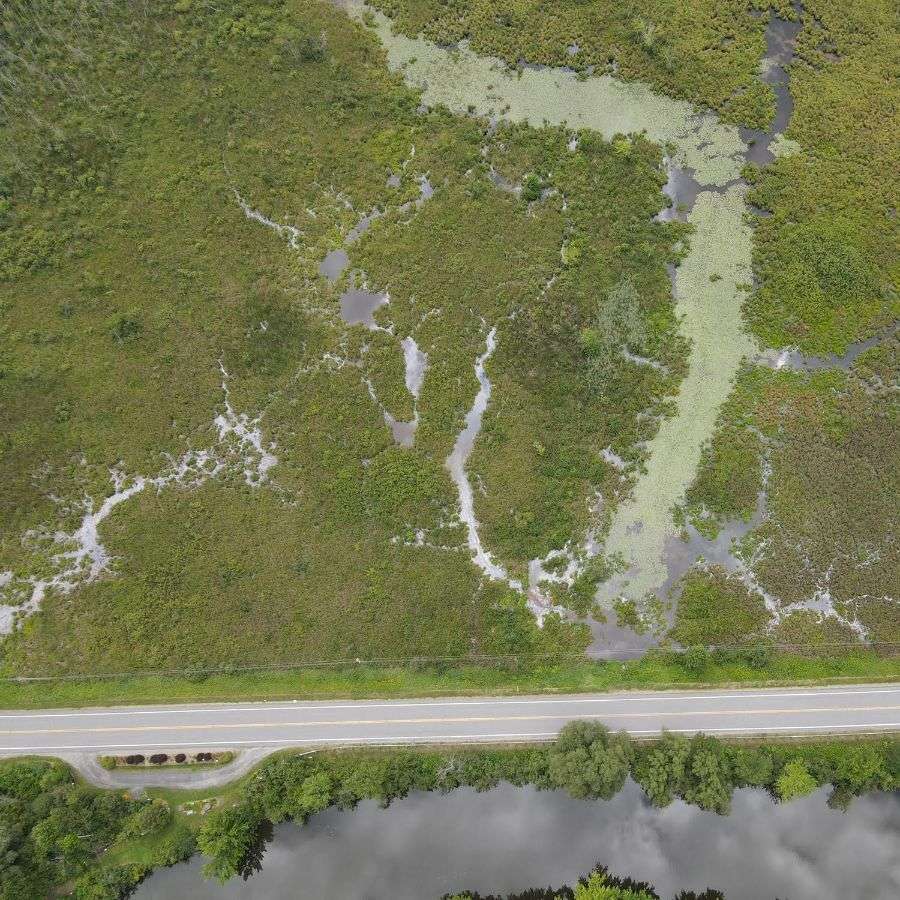
 About the author of this article :
About the author of this article :
Mark Gloutney is Ducks Unlimited Canada’s national Director of Science, Education and Business Planning.
Originally published in The Globe and Mail on September 9, 2022
Thank you for granting us permission to share this article.
Reading Time: 4-6 minutes
Chances are high that you saw it over the summer at your favourite lake: thick scum on the water’s surface, often resembling pea soup. Blue-green algae (also called cyanobacteria) can render water unsafe for swimming and often makes people, pets, livestock, and wildlife sick.
In July, Nova Scotia listed 26 waterways suspected to have blue-green algae blooms. Officials with Alberta Health Services identified blue-green algae in areas of Camp Lake, east of Edmonton, and Haunted Lake (an ironic name for a place fouled by the sinister sludge), east of Red Deer. The Saskatchewan Health Authority issued a blue-green algae warning for Little Manitou Lake, southeast of Saskatoon. British Columbia’s Capital Regional District saw toxic algae blooms in three different lakes across two regional parks in August.
In other areas, the issue has been a recurring problem. For the past two decades, federal authorities have been closely monitoring algae conditions in three lakes with chronic blooms – Lake Winnipeg, Lake of the Woods and Lake Erie. The recently released State of the Great Lakes 2022 Report, published jointly by Canada and the United States, suggests there’s still a long road ahead for some of these iconic waterbodies, citing “significant threats to the Great Lakes ecosystem, including the impacts of nutrients.”
While algae occur naturally in water, excess nutrients feed overgrowth. The problem often begins far away. Runoff water from the watershed flows downstream, carrying nutrients such as phosphorus and nitrogen. This could be a result of agricultural runoff, sources such as improperly managed septic fields, or wastewater treatment overflows.
Climate change is only making matters worse. Hot weather creates favourable conditions for blue-green algae blooms. August saw heat warnings issued in five provinces, spanning Eastern Canada from Ontario to the Maritimes. British Columbia also saw days of record-breaking temperatures this summer. As heat waves drive more people to seek respite in the water, the sickness plaguing Canada’s lakes may turn them away. People and animals exposed to toxic algae blooms can experience sudden flu-like symptoms and neurological problems.
Facing this, what can we do to keep our lakes healthy and clean? Protect and restore our natural wetlands.
Wetlands are amazing ecosystems that slow runoff flows, keeping excess phosphorus, nitrogen, and other harmful nutrients from lakes and streams. But they continue to be undervalued. Shrouded by cattails, the still and shadowy waters of marshes, ponds and bogs are often mistaken as a symptom of poor water quality rather than a solution to it. But don’t let appearances fool you. Wetlands are one of the most powerful solutions for chronic water issues.
Conservation organizations have long touted wetlands as water filters and a natural defence against the growth of blue-green algae. New research is quantifying this power.
For two years, Ducks Unlimited Canada studied eight small restored wetlands on the north side of Lake Erie to measure their ability to reduce nutrients in water before it reaches a lake. These small wetlands were low-lying, “edge-of-field” areas that had little value for crop production but enormous value in catching runoff from the surrounding agricultural lands. The wetlands retained 60 per cent of the most problematic form of soluble-reactive phosphorus from the water. They also retained 46 per cent of total phosphorus and 47 per cent of total nitrogen. Complementary research conducted in Manitoba showed that draining wetlands increases the amount of nutrients delivered to rivers and lakes downstream.
The good news is we have a strong understanding of what’s causing these outbreaks of blue-green algae and what can be done. The bad news is we’re not investing nearly enough to have a significant impact on the problem. Ducks Unlimited Canada estimates about 32 hectares of wetland are lost every day in Southern Canada.
Until we do more to conserve and restore wetlands, we can expect more beach closings and health advisories. Beyond the obvious drain on summertime fun, the economic, social and ecological repercussions will be significant. Depletion of fishery stocks, losses to tourism, as well as additional expenses related to water monitoring and treatment are all costly realities.
Wetlands are life preservers amid our water crisis. But these ecosystems are stressed. Will we move to protect them before it’s too late – for them, for our freshwater and for all of us?
Click on the link for more information and articles on wetlands written by our friends at Ducks Unlimited: https://www.ducks.ca/stories/

